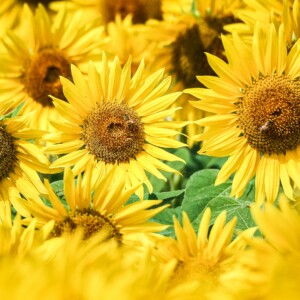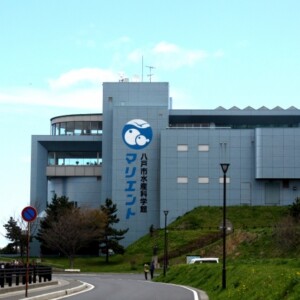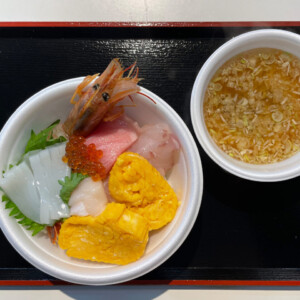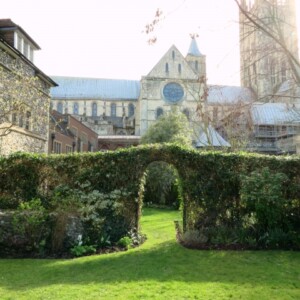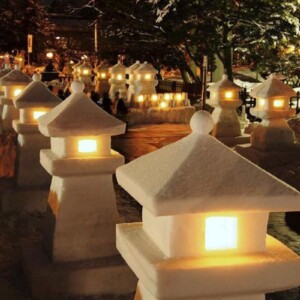
The extremely complicated operational form of "Rikuchu" that once existed express train is a legendary story [Iwate Prefecture]
table of contents
- 1 The first Rikuchu, which connected Ueno Station, Morioka Station, and Miyako Station
- 2 The second generation Rikuchu began operating in detours.
- 3 The second generation Rikuchu was complicated to connect and disconnect.
- 4 Rikuchu returns to Miyako
- 5 Downgraded to rapid train ``Hamayuri'' and abolished
- 6 summary
In today's Japanese railways, there are almost no such things as
``trains that run on strange routes'' Taking trains that run in the Tohoku region as an example, the rapid train "Rias" that operates on the Yamada Line in Iwate Prefecture has a simple route between Morioka Station and Miyako Station, and only operates on the Yamada Line. remains.
There are no strange things worth mentioning.
However, during the era of Japan National Railways, the predecessor of JR, trains with complicated routes were operated all over the country.
The express train ``Rikuchu'' that we will be introducing today is one of the most representative of such trains .
The first Rikuchu, which connected Ueno Station, Morioka Station, and Miyako Station
the express ``Rikuchu'' appeared.
One vehicle heads from Ueno Station in Tokyo to Morioka Station via the Joban Line, and another vehicle heads from Hanamaki Station in Iwate Prefecture to the Kamaishi Line heading for the Pacific Ocean, then from Kamaishi Station to the Yamada Line (*) heading for Miyako Station. , was a train that ran connected between Ueno Station and Hanamaki Station.
Today's Shinkansen trains, the Tohoku Shinkansen's Hayabusa and the Akita Shinkansen's Komachi, operate in tandem between Tokyo Station and Morioka Station.
*The section between Kamaishi Station and Miyako Station is currently transferred to Sanriku Railway, but until 2019 it was part of the JNR/JR Yamada Line.

The time required was approximately 8 hours between Ueno Station and Morioka Station, and approximately 11 hours between Ueno Station and Miyako Station (the train between Hanamaki Station and Miyako Station was downgraded from express to semi-express).
The current time it takes to travel between Ueno Station and Morioka Station on the Tohoku Shinkansen is just over two hours, so it feels like a world away.
In October 1966, just five years after its introduction, the Rikuchu train, which departed from and arrived at Ueno Station, ceased operation.
The name ``Rikuchu'' is given to a completely different train.
Therefore, in this article, we will distinguish between the first generation for the Rikuchu up to September 1966, and the second generation for the Rikuchu from October onwards.
The second generation Rikuchu began operating in detours.

The second generation Rikuchu was
a train that connected Sendai Station and Akita Station via Miyako Station and other stations The route from Sendai Station via Hanamaki Station, Kamaishi Station, and Miyako Station is the same as the original Rikuchu.
The route from Miyako Station to Akita Station is to first take the Yamada Line to Morioka Station, then head north on the Tohoku Main Line (currently the Iwate Galaxy Railway Line), and then join the Hanawa Line at Koma Station.
After traveling on the Hanawa Line and arriving at Odate Station in Akita Prefecture, the train travels on the Ou Main Line to Akita Station.
This second-generation Rikuchu takes
very long detours, both between Sendai Station and Morioka Station, and between Morioka Station and Akita Station It took about 13 and a half to 14 hours to travel the entire route from Sendai Station to Akita Station.
In addition, the express train ``Kitakami'', which connects Sendai Station and Aomori Station via the Kitakami Line, takes about 4 and a half hours between Sendai Station and Akita Station.
Therefore, there were probably almost no people who traveled the entire length of Rikuchu, with the exception of railway enthusiasts whose only purpose was to ride the train.
The second generation Rikuchu was complicated to connect and disconnect.
The route of the second-generation Rikuchu was not just complicated.
There were many trains that were connected or disconnected ``on land'' along the way.
The story will proceed based on the train schedule from Sendai to Akita in October 1968.
is connected to
Kurikoma No. 1 bound for Aomori Murone No. 1 bound for Sakari Heading north on the Tohoku Main Line, Murone No. 1 disconnects at Ichinoseki Station in Iwate Prefecture and joins the Ofunato Line, heading towards Mori Station (*).
Sakari from Mori to Aomori, which came up the Ofunato Line, will be connected to ``Kurikoma 1'' and ``Rikuchu.''
Further north on the Tohoku Main Line, at Hanamaki Station, Rikuchu is separated from Kurikoma No. 1 and Sakari, and then joins the Kamaishi Line.
By the way, "Kurikoma 1" and "Sakari" will be connected to "Hayatine 1" departing from Kamaishi and bound for Morioka instead of "Rikuchu".
*The Ofunato Line currently runs between Ichinoseki Station and Kesennuma Station, but at the time it ran all the way to Mori Station.
Rikuchu runs through the Kamaishi Line and Yamada Line, and connects at Morioka Station with
Michinoku Furthermore, ``Michinoku'' is a train that came all the way down the Joban Line and Tohoku Main Line from Ueno Station, but it left Ueno Station at 7:45 in the morning.
Rikuchu left Sendai Station at 7:40, so Michinoku left Ueno Station five minutes later.
Michinoku will arrive at Morioka Station at 16:12, and Rikuchu will arrive eight minutes later.
In other words , it takes longer for Rikuchu to run from Sendai Station to Morioka Station than it takes for Michinoku to run from Ueno Station to Morioka Station .
``Michinoku'' and ``Rikuchu'' run via the Hanawa Line to Odate Station in Akita Prefecture, where they are separated and ``Michinoku'' heads to Hirosaki Station in Aomori Prefecture.
, Rikuchu is connected Mutsu , which departs from Aomori and bound for Akita
So, there are five trains that are connected to Rikuchu, and although I will not introduce them, there were other trains that were connected to Rikuchu as well .
I'm impressed by how well they were able to realize such a complex mode of operation.
Source: Wikipedia
Rikuchu returns to Miyako
I don't know whether the circuitous route was deemed wasteful, or whether the connection and disconnection operations were too complicated and it was difficult to operate on time, but the second generation Rikuchu was released only five and a half years ago. Due to the timetable revision in March 1972, the service section was shortened between Sendai Station and Miyako Station .
Miyako Station is now the starting and ending train.
Ten years later, in 1982, the Tohoku Shinkansen opened, and with the timetable revision in November, the service was shortened to between Kitakami Station and Miyako Station, making the train run only within Iwate Prefecture.
There is no longer anyone to connect or disconnect.
In March 1985, was changed
to between Morioka Station and Miyako Station As usual, the train did not take the shortest route between Morioka Station and Miyako Station, but instead took a detour via Hanamaki Station and Kamaishi Station .
In 1987, the Japanese National Railways was disbanded and the Tohoku region's routes were taken over by JR East.
In 1990, a new model, the Kiha 110 series, was introduced to replace the Kiha 58 series, which had been used since the JNR era.
This is one of the few cases in which a vehicle that appeared after JR was established was used for JR's express trains.
As an aside, these diesel cars run on diesel engines powered by light oil, and are not trains.
In November 1990, as a result of forgetting to refuel the vehicle at Morioka, the Rikuchu No. 3 train departing from Morioka and bound for Kamaishi ran out of fuel and became unable to move (so-called gas shortage) .
Downgraded to rapid train ``Hamayuri'' and abolished

JNR/JR express trains differ from rapid trains in that they require an express fare, but they are slower and less comfortable than limited express trains, making them a half-baked existence. will be abolished.
Rikuchu was no exception.
In the 2000s, the express ``Rikuchu'' was downgraded to the rapid ``Hamayuri.''
Then, with the timetable revision in December 2002, the downgrade was completed and "Rikuchu" disappeared .
After the downgrade, "Hamayuri" is a regular and simple train that, as of March 2024, all trains connect Morioka Station and Kamaishi Station via the Tohoku Main Line and Kamaishi Line.
In the past, only one ``Hamayuri'' train departed from Miyako, went via Kamaishi, and went to Morioka a day, following the operating section of ``Rikuchu'' (no train departed from Morioka and went to Miyako).
Line being damaged by the Great East Japan Earthquake in 2011, train service to and from Miyako Station
has been discontinued. Transferred from East Japan to Sanriku Railway). There are no trains that connect and run together.
It is hard to imagine that this train is the successor to the once complex and mysterious second-generation Rikuchu.
summary
The second-generation express train, Rikuchu, ran in detours around the Tohoku region, repeatedly encountering and parting ways with various other express trains, an operation style that would be completely unimaginable today .
Because of its complexity, it is a train that is still talked about like a legend among railway fans.
We hope that you have been able to experience a part of the interesting history of railways in the Tohoku region.




![Introducing a difficult train that even staff members of Inawashiro express trains with three destinations [Fukushima Prefecture] 30681041_m](https://jp.neft.asia/wp-content/uploads/2024/10/30681041_m-150x150.jpg)
![The specialty of Genbikei, "Flying Dango," is definitely worth a visit! Delicious activities! [Ichinoseki City, Iwate Prefecture] Genbikei bus stop](https://jp.neft.asia/wp-content/uploads/2017/04/IMG_5931-150x150.jpg)
![Bottle Don is the definitive Sanriku souvenir that looks delicious! [Iwate Prefecture] Bottle don (abalone, scallop, salmon roe)](https://jp.neft.asia/wp-content/uploads/2023/06/IMG_5048-150x150.jpg)
![Ryusen-no-no-no-no-no-no-no-no-no-no-no-no-no-no-no-no-no-no-no-no-no-no-no-no-no-no-no-no-no-no-no-no-no-no-no-no-no-no-no-no-no-no-no-no-no-no-no-no-no-no-no-no-no-no-no-no-no-no-no-no-no-no-no-no-no-no-no-no-no-no-no-no-no-no-no-no-no-no-no-no-no-no-no-no-no-no-no-no-no-no-no-no-no-no-no-no-no-no-no-no-no-no-no-no-no-no-no-no-no-no-no-no-no-no-no-no-no-no-no-no-no-no-no-no-no-no-no-no-no-no-no-no-no-no-no-no-no-no-no-no-no-no-no-no-no-no-no-no-no-no-no-no-no-no-no-no-no-no-no-no-no-no-no-no-no-no-no-no-no-no-no-no-no-no-no-no-no-no-no-no-no-no-no-no-no-no-no-no-no-no-no-no-no-no-no-no-no-no-no-no-no-no-no-no-no-no-no-no-no-no-no-no-no-no-no-no-no-no-no-no-no-no-no-no-no-no-no-no-no-no-no-no-no-no-no-no-no-no-no-no-no-no-no-no-no-no-no-no-no-no-no-no-no-no- [Iwate Prefecture] Ryusendo Cave (first underground lake)](https://jp.neft.asia/wp-content/uploads/2023/07/PXL_20230512_052246926.NIGHT_-150x150.jpg)
![[Series ②: The role of the previous nine years and the role of the second three years] The role of the previous nine years is from the truce to the battle again, and the Kokufu army is struggling Taga Castle Ruins](https://jp.neft.asia/wp-content/uploads/2023/11/a0b8b1213124e7a13c7308fa81e053a2-150x150.jpg)
![[Iwate Prefecture] Soft-serve ice cream with sake, miso and wasabi flavor! Why are the soft serve ice cream eaten at roadside stations so delicious? There's also school lunches! Iwate Prefecture Catch](https://jp.neft.asia/wp-content/uploads/2025/06/915fd0ce722ab0f21e74864401170847-150x150.jpg)

